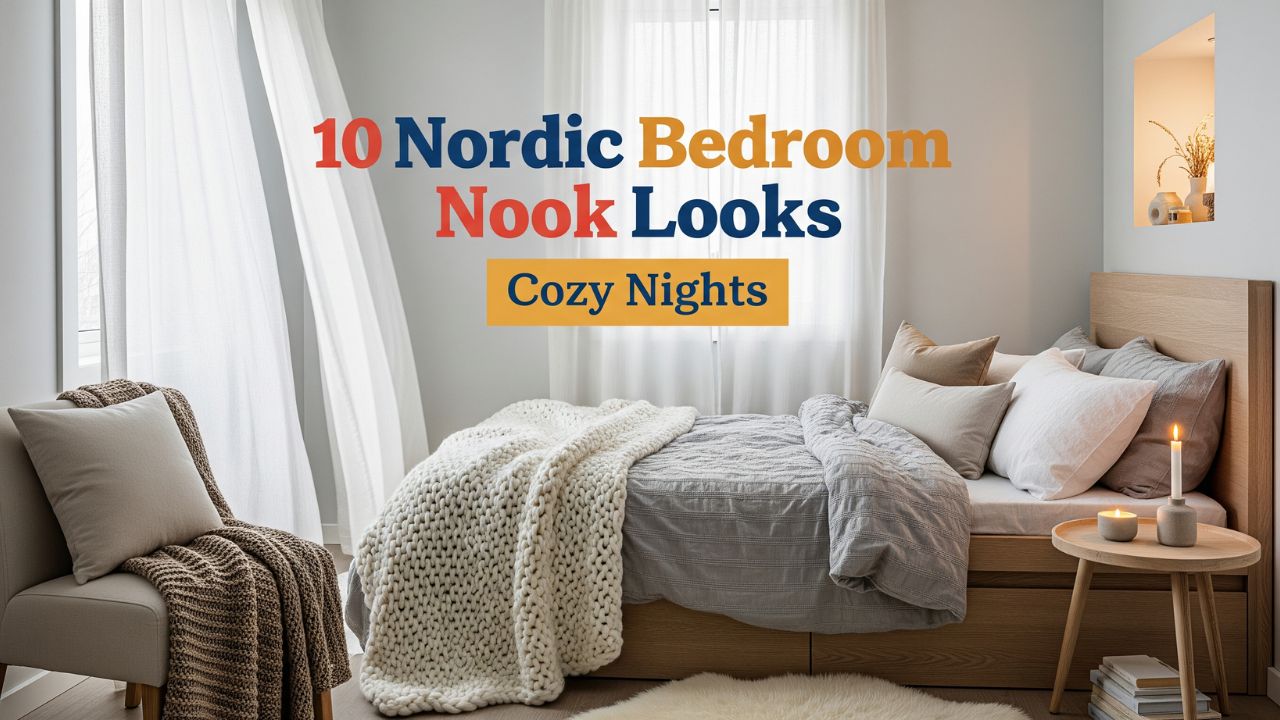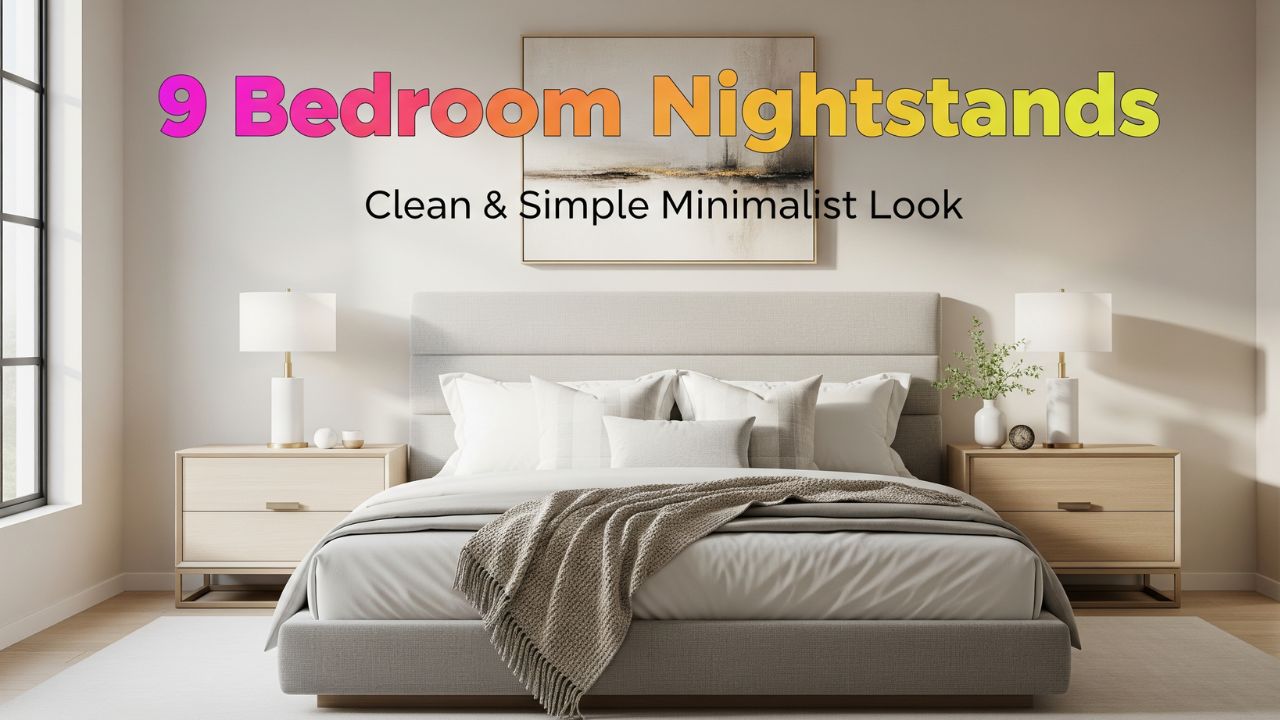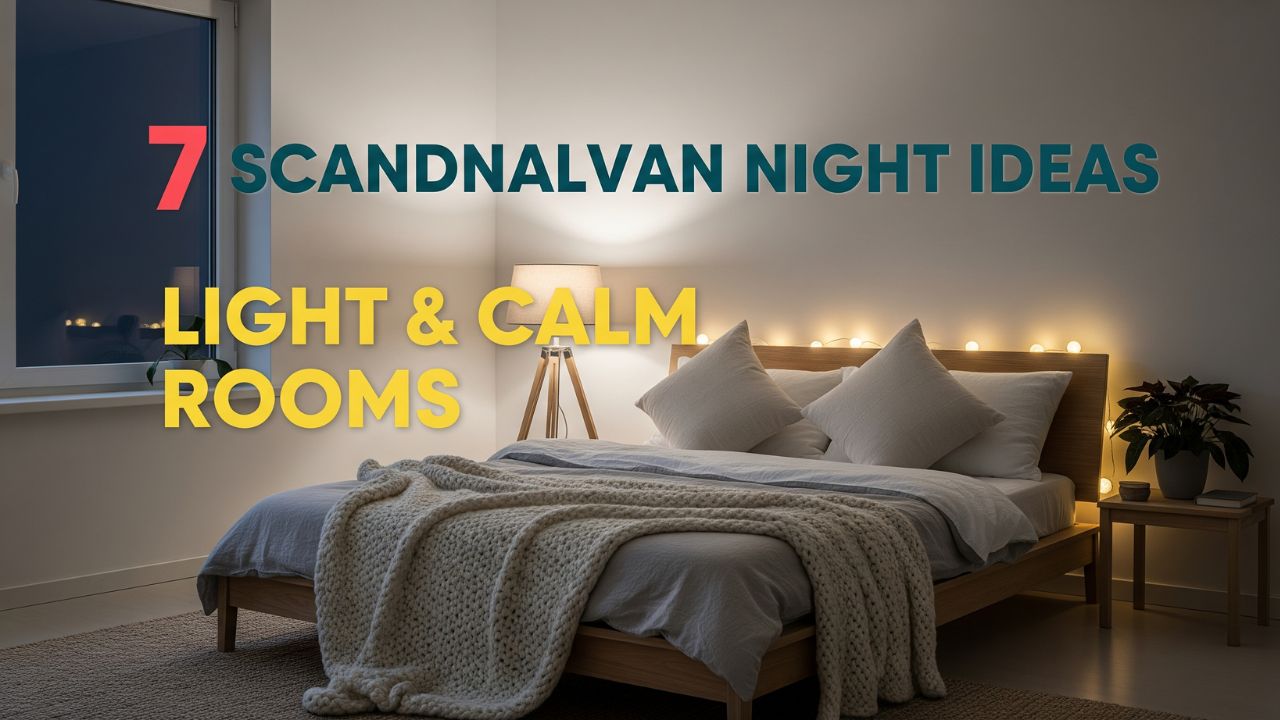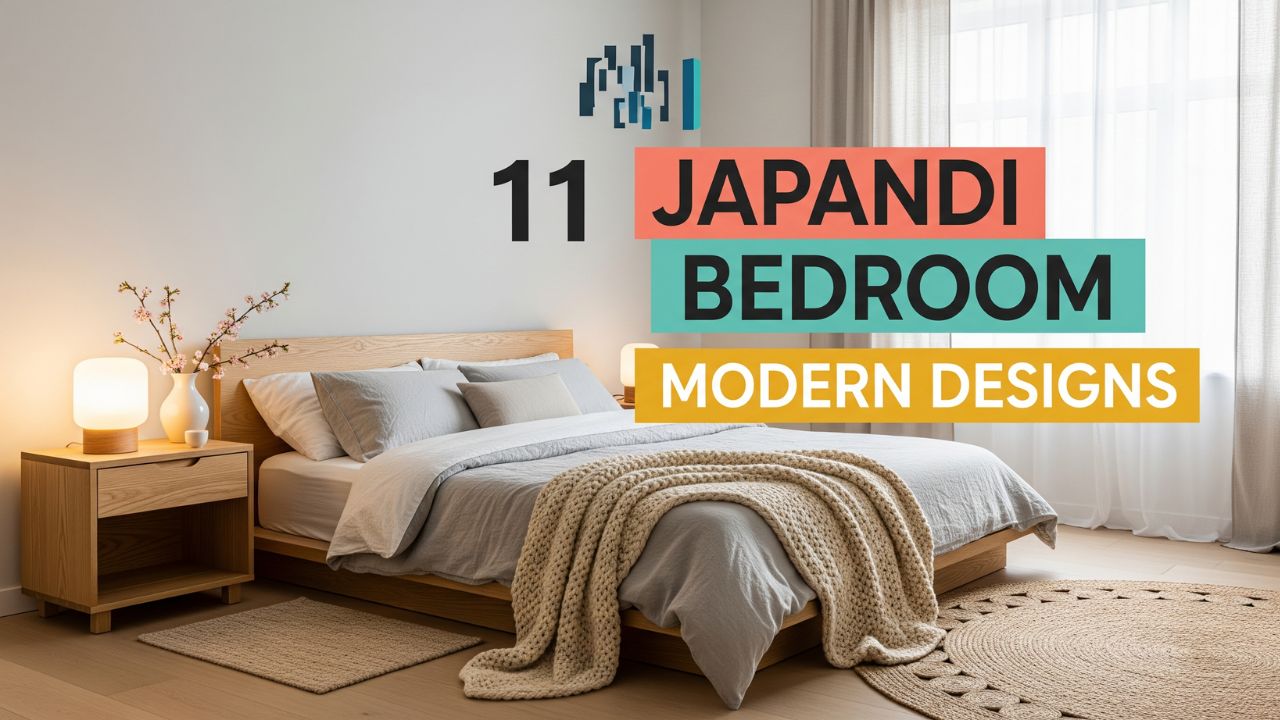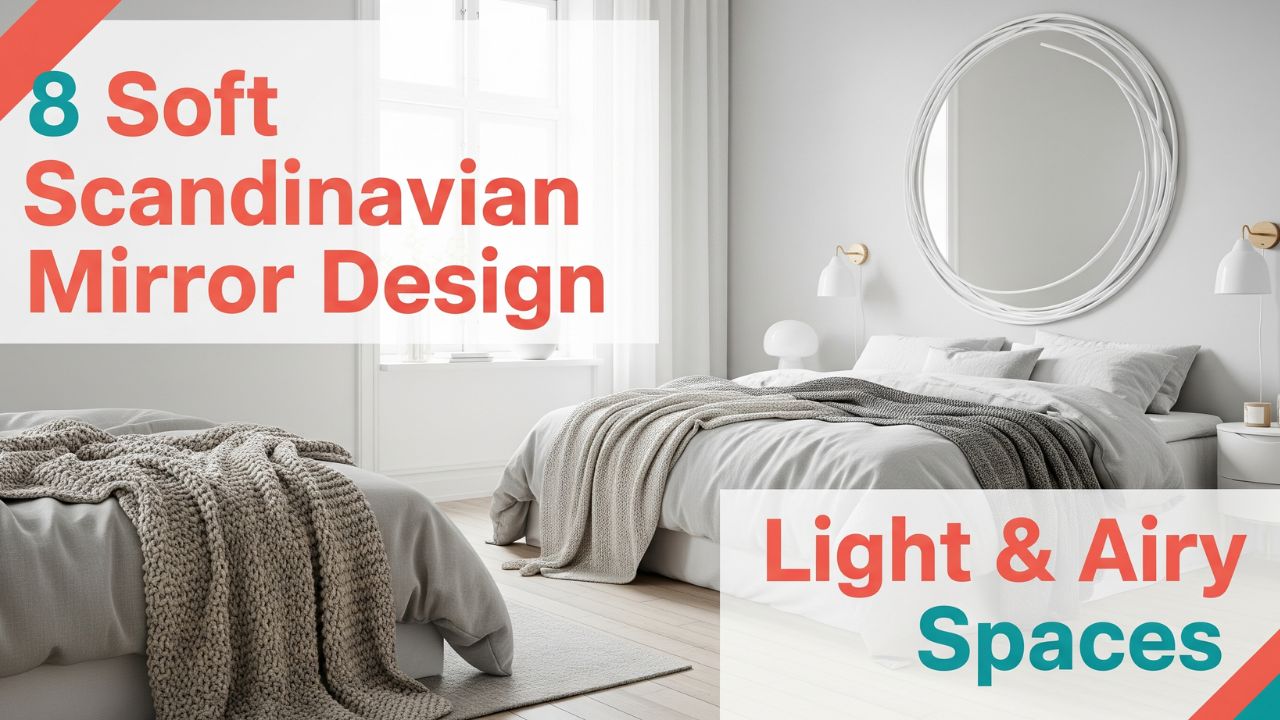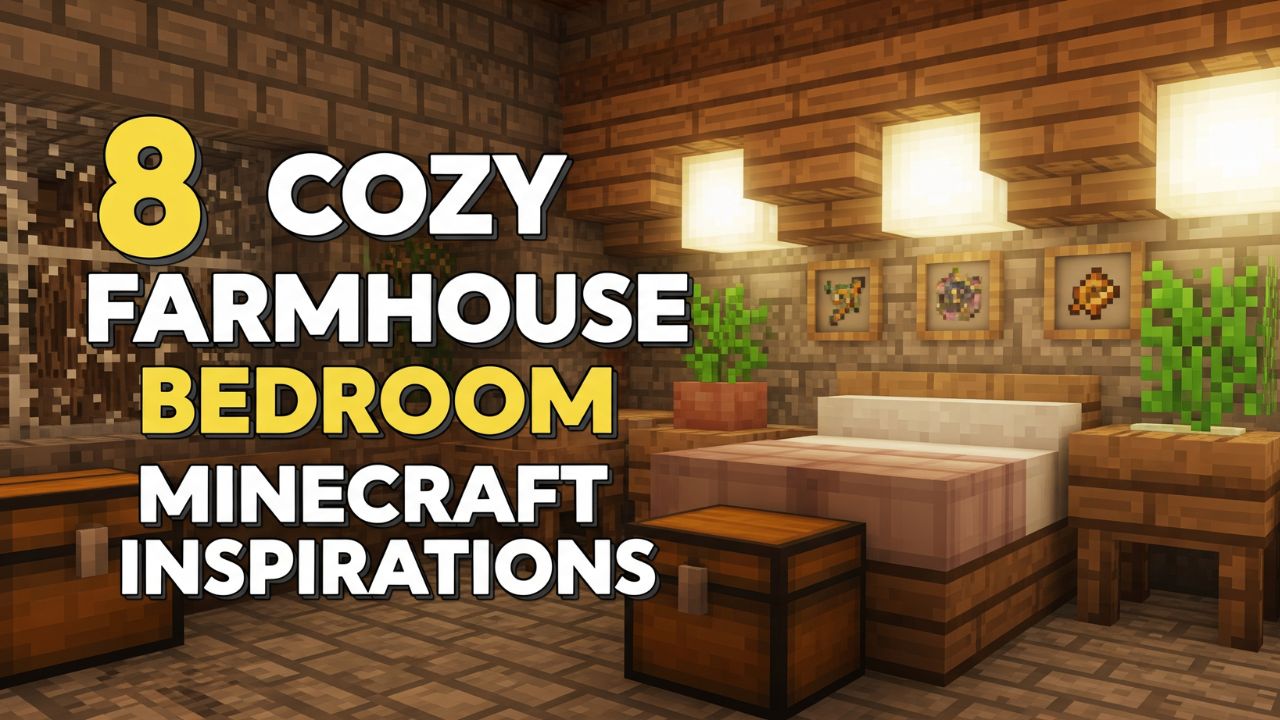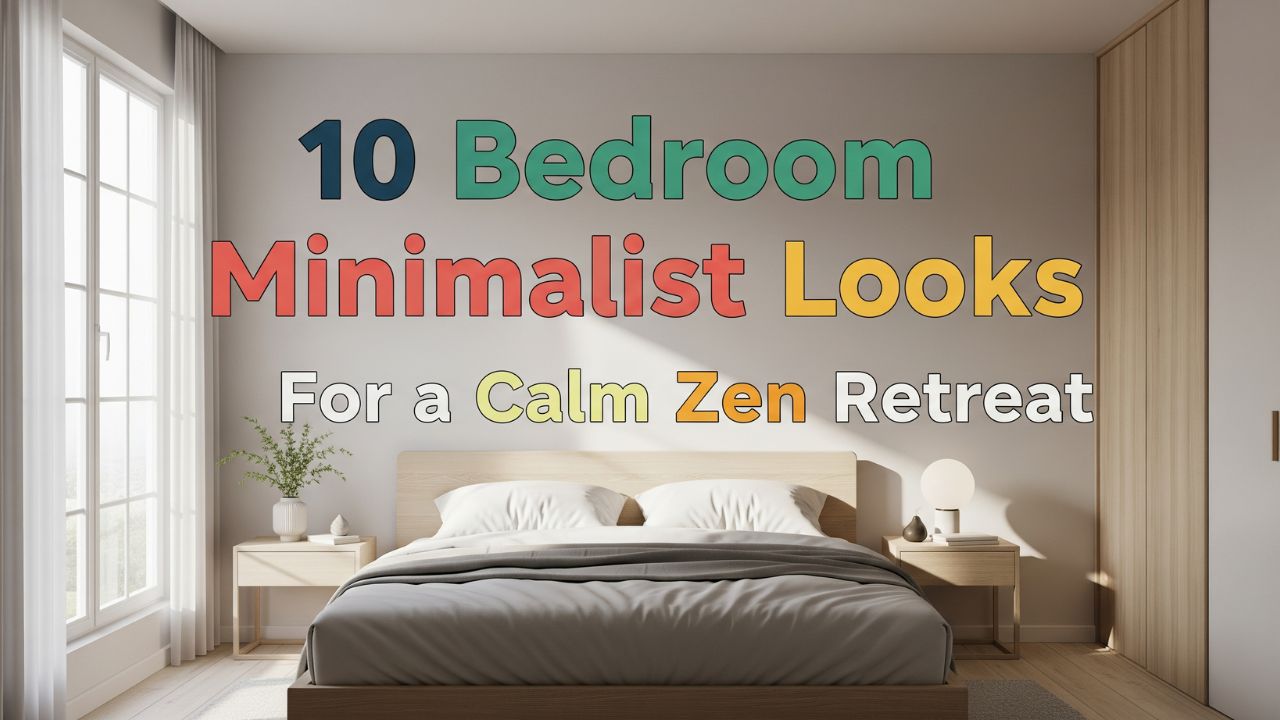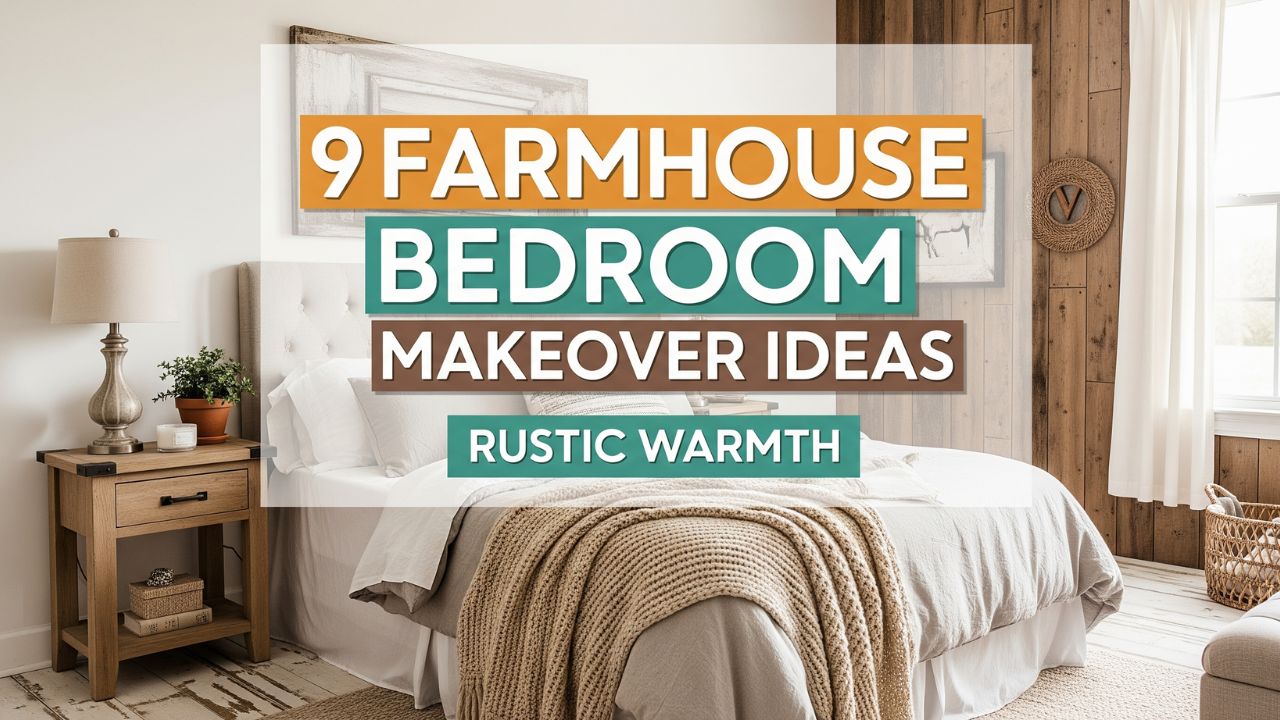Do you know that the average living room in most homes is shrinking? With urban apartments and smaller houses becoming more common, homeowners are constantly searching for ways to make their living spaces feel larger without knocking down walls.
But here’s a surprising fact: your living room doesn’t actually have to be physically bigger to feel expansive.
With some clever design tricks and smart furniture choices, you can create the illusion of space, making your living room not only look larger but also feel more open and inviting.
In this guide, we’ll explore ten practical tips that can transform even the coziest living room into a spacious, airy, and stylish retreat. Whether you’re dealing with limited square footage or just want to refresh your space, these tips will help you achieve a more expansive atmosphere.
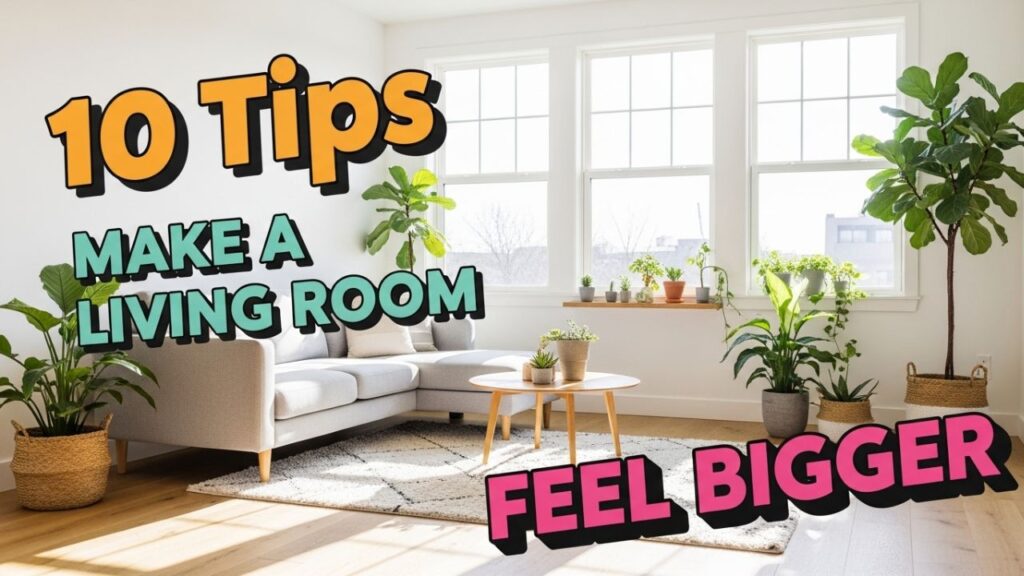
Table of Contents
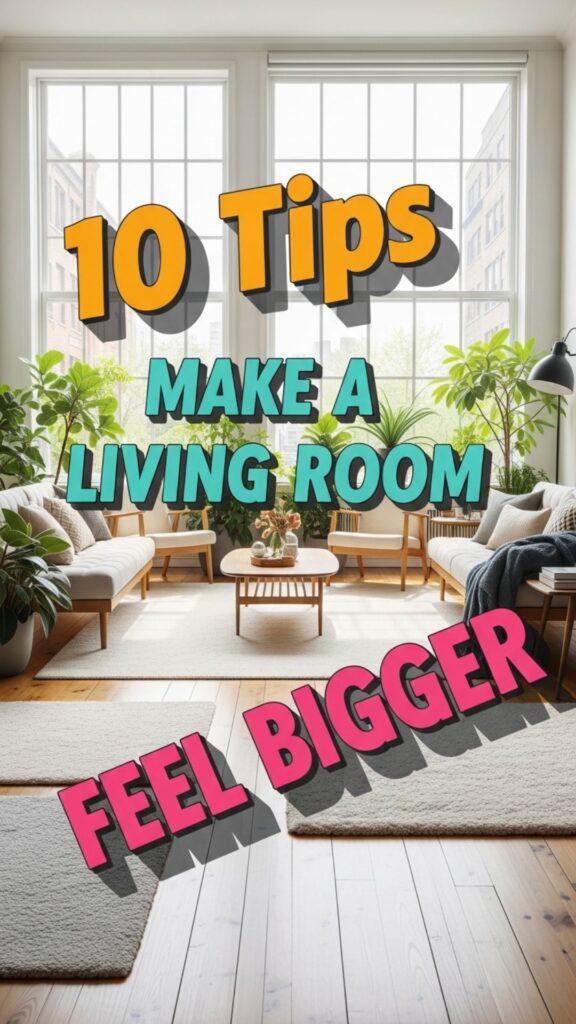
10 Tips To Make Living Room Better
1. Choose Light and Neutral Colors
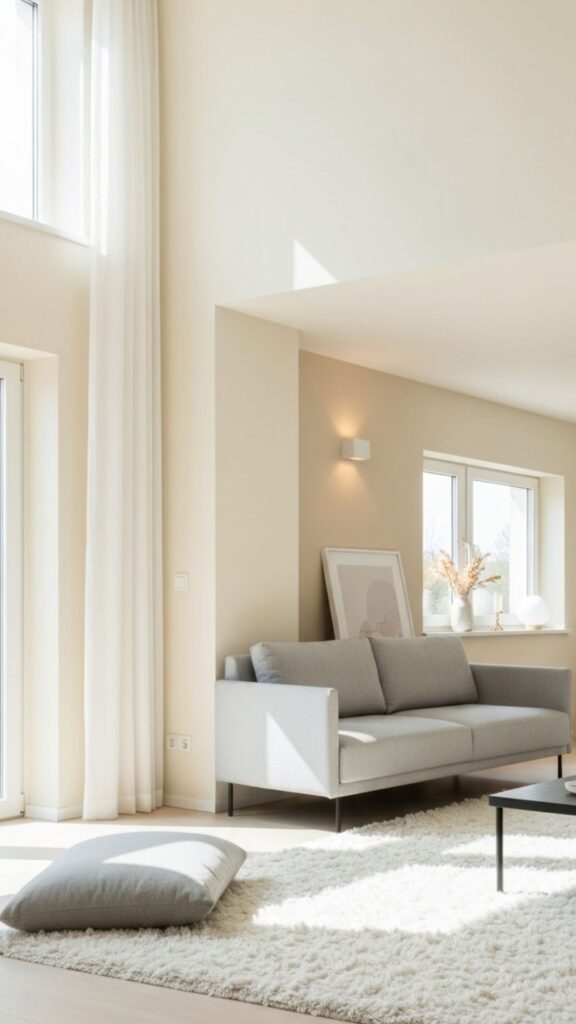
Color can dramatically affect how spacious a room feels. Lighter shades like whites, creams, soft grays, and pastels reflect more light, creating an airy and open atmosphere. Dark colors, while cozy, tend to absorb light and make a room feel smaller.
Do you know? According to color psychology studies, rooms painted in soft neutrals can feel up to 30% larger than those with dark tones. Not only do light colors enhance space visually, but they also make it easier to incorporate accent colors through décor and furniture without overwhelming the room.
If you want a little personality, add subtle pops of brighter colors through accessories like cushions, rugs, or artwork. The key is to keep the base color palette light and airy.
2. Use Mirrors Strategically
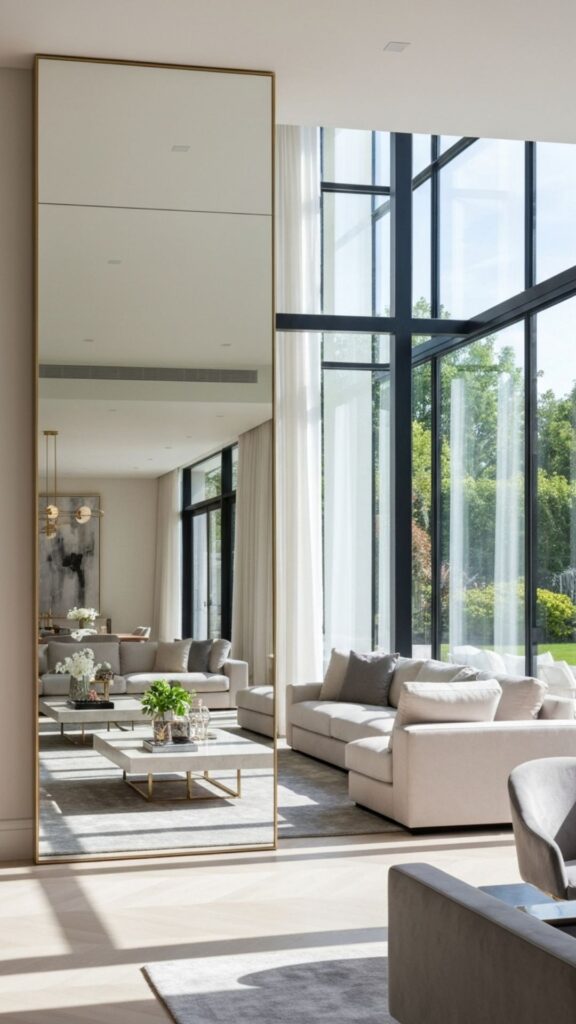
Mirrors are not just decorative—they are one of the oldest tricks interior designers use to create the illusion of space. By reflecting both natural and artificial light, mirrors can make your living room feel brighter and larger.
Interesting fact: Placing a large mirror opposite a window can double the amount of natural light in a room, instantly making it feel more open. For smaller living rooms, consider floor-to-ceiling mirrors or mirrored panels. Even a well-placed decorative mirror above a fireplace or behind a sofa can trick the eye into perceiving more depth.
Remember to avoid overcrowding walls with multiple small mirrors, as this can create visual clutter instead of spaciousness.
3. Opt for Multi-Functional Furniture
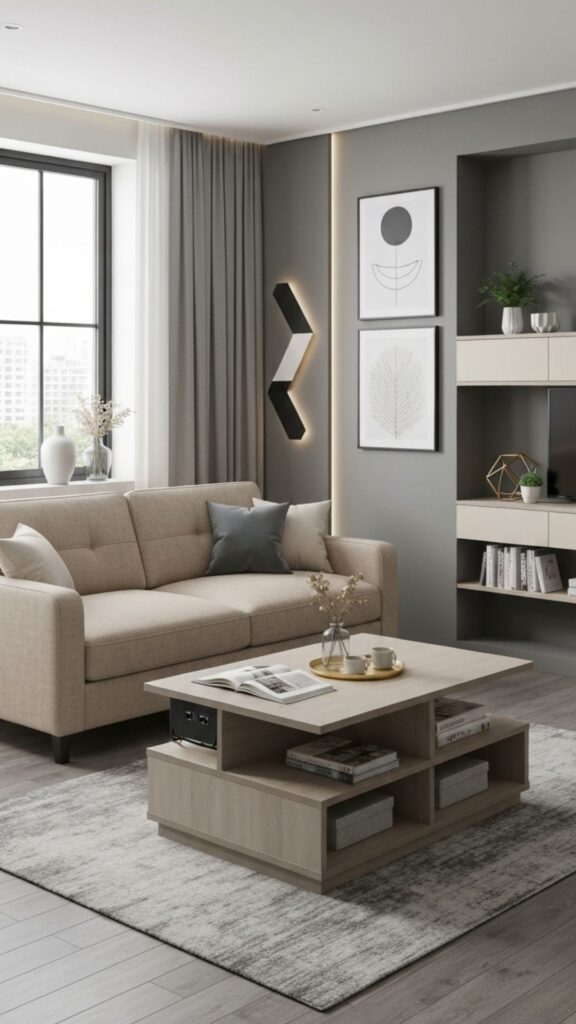
When it comes to maximizing space, furniture that serves multiple purposes is a lifesaver. Sofas with storage compartments, coffee tables that double as seating, and ottomans that open to store blankets or toys are excellent choices.
Do you know? A small storage ottoman can replace bulky side tables and provide extra seating for guests, instantly freeing up floor space. Multi-functional furniture reduces clutter and keeps the room looking sleek and organized, which naturally makes the living room feel larger.
Prioritize pieces that have clean lines and minimal ornamentation, as bulky furniture can shrink the perception of space.
4. Embrace Open Floor Plans
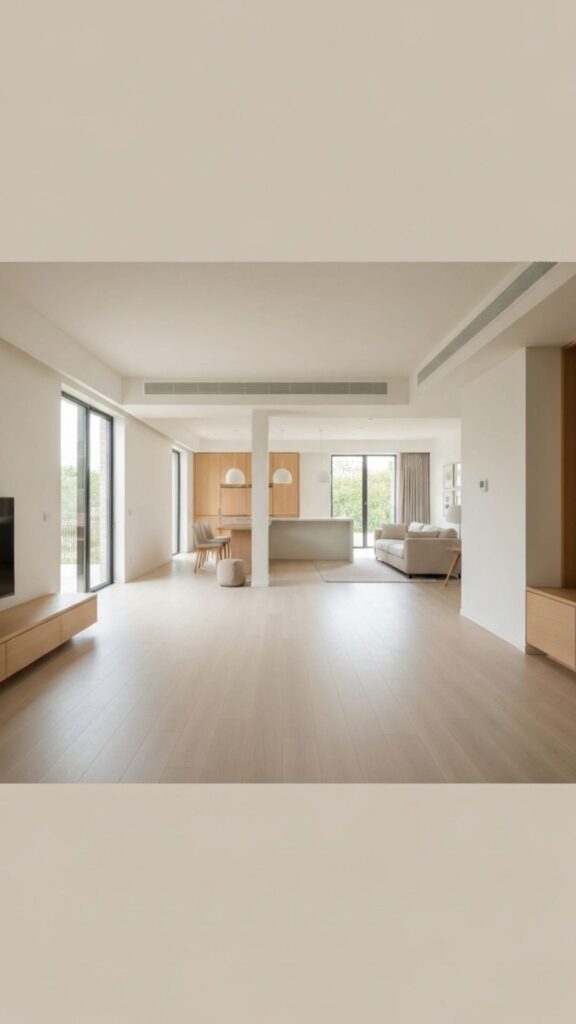
Nothing makes a living room feel bigger than having plenty of open floor space. If your layout allows it, avoid overcrowding the room with furniture. Instead, arrange your seating and tables to create natural pathways, making it easier for the eye to travel across the room.
Myth busted: Many people think filling every corner with furniture makes a room cozy, but overcrowding actually makes a space feel cramped. Open layouts give a sense of freedom and allow for better movement, making even smaller living rooms feel luxurious.
If your living room is connected to a dining area or kitchen, consider leaving visual continuity in flooring and colors to enhance the sense of space.
5. Use Vertical Space
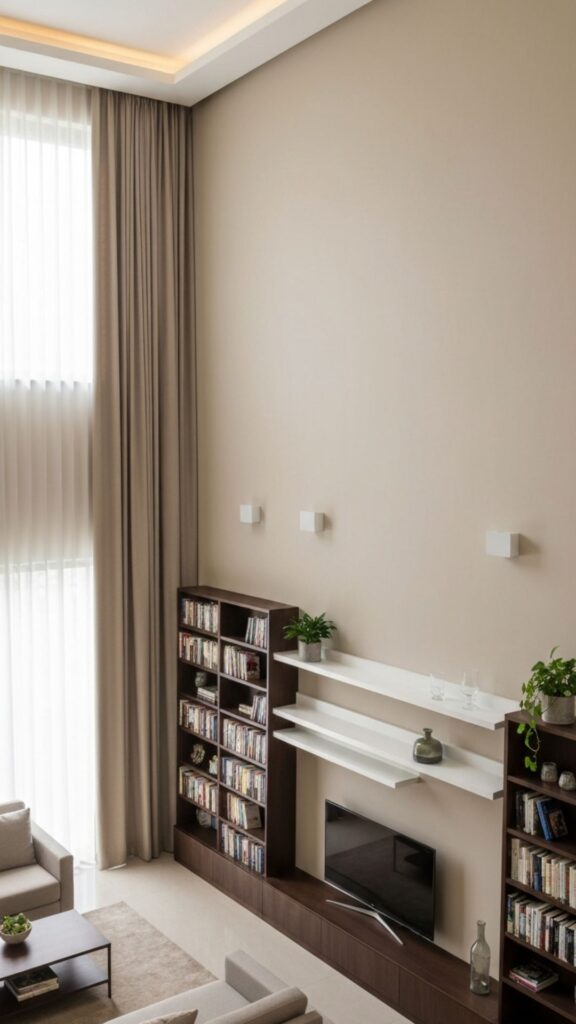
When floor space is limited, look upward. Tall bookshelves, vertical storage units, and wall-mounted cabinets draw the eye upward, creating the illusion of height.
Interesting fact: Research shows that rooms with a strong vertical emphasis, such as high shelves or long curtains, can make a space feel 20-25% taller. Hanging curtains closer to the ceiling rather than directly above the windows can further enhance this effect.
Additionally, vertical décor elements like vertical striped wallpaper or tall artwork can help elongate walls, adding to the perception of a bigger room.
6. Keep Furniture Away from Walls
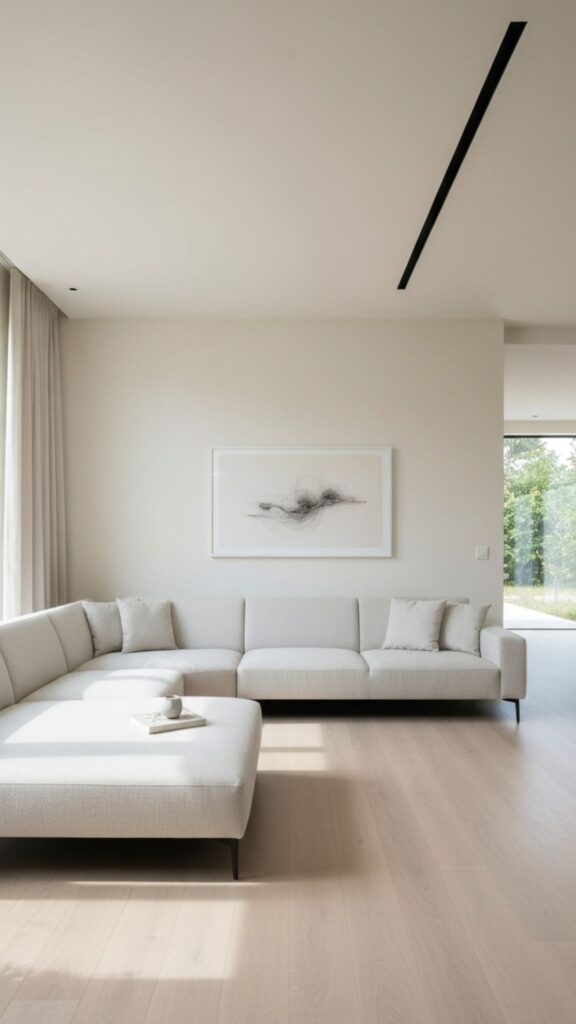
It might seem counterintuitive, but pulling furniture slightly away from the walls can make a living room feel larger. This creates a sense of depth and opens up walking paths, giving the illusion of more space.
Do you know? Interior designers recommend leaving at least 6-12 inches of space between the sofa and the wall. This simple adjustment allows light to flow around the furniture, preventing the room from feeling boxy or confined.
Pair this with floating furniture arrangements, like a centrally placed sofa or coffee table, to enhance the airy vibe.
7. Minimize Clutter and Decor Overload
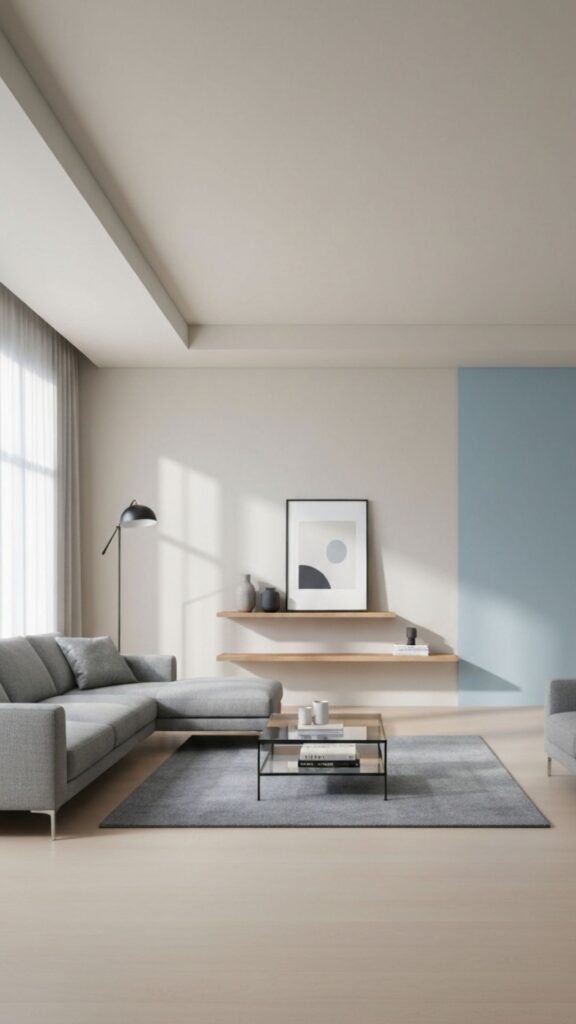
Clutter is the enemy of a spacious living room. While accessories, artwork, and décor can add personality, too many items can visually shrink a space.
Interesting fact: Studies suggest that rooms with minimal clutter not only feel bigger but also reduce stress levels and improve relaxation. Choosing a few statement pieces over multiple small items creates a cleaner, more open aesthetic.
Adopt smart storage solutions, such as baskets, concealed cabinets, and decorative trays, to keep everyday items out of sight. Less visual noise equals a more expansive feel.
8. Incorporate Glass and Transparent Furniture
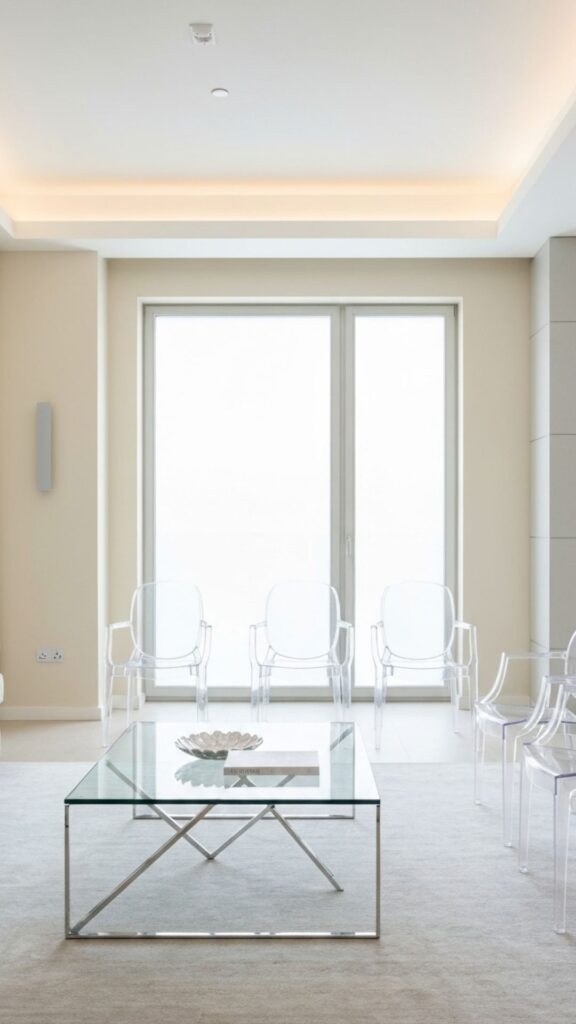
Transparent furniture, such as glass coffee tables, acrylic chairs, or open shelving, allows light to pass through, maintaining an unobstructed line of sight. This makes the living room appear less crowded.
Do you know? Glass and acrylic furniture have been a design staple in small apartments for decades because they create the illusion of space without sacrificing functionality. A glass-top table can serve as a centerpiece without visually breaking up the floor space.
Using a combination of transparent and light-colored materials further enhances the feeling of openness.
9. Maximize Natural Light
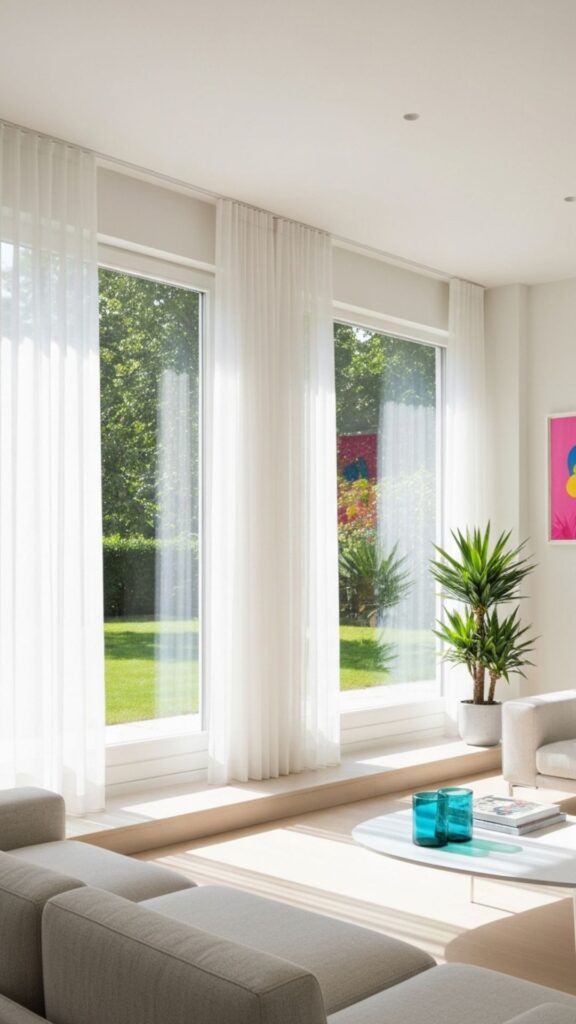
Natural light is one of the most effective ways to make any room feel bigger. Keep windows unobstructed and use sheer curtains instead of heavy drapes. Skylights, when possible, can flood the room with light and make even small spaces feel open and airy.
Interesting fact: Sunlight not only enhances the sense of space but also boosts mood and energy levels. Rooms with ample natural light are perceived as healthier and more welcoming.
Consider reflecting natural light with strategically placed mirrors and glossy surfaces to bounce light around the room and brighten even the darkest corners.
10. Use Rugs to Define Zones
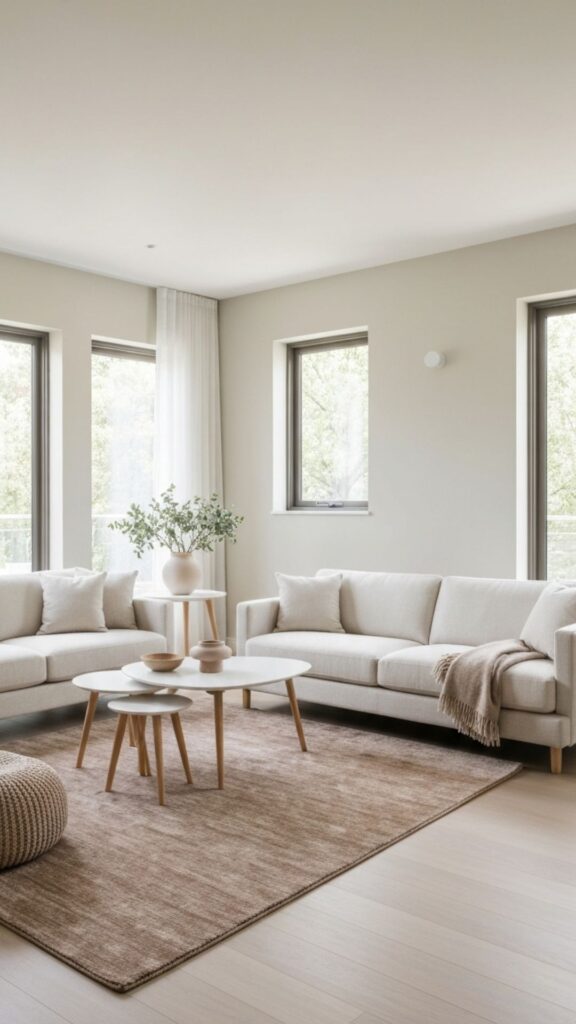
Rugs aren’t just decorative; they can help delineate areas and create the perception of distinct zones within a room. A well-placed rug can anchor a seating area, giving structure to an open floor plan while visually expanding the room.
Do you know? Choosing rugs that are slightly larger than your furniture arrangement can make the space feel unified and more expansive. Avoid tiny rugs that cut the floor into small segments, which can make the room appear disjointed and cramped.
Layering rugs with complementary colors and textures can also add depth, enhancing the sense of spaciousness.
Conclusion
Making a living room feel bigger doesn’t require a major renovation or a bigger budget—it’s all about strategic choices, clever design, and an understanding of how visual perception works.
From using light colors and mirrors to embracing open layouts and transparent furniture, every decision can contribute to a more expansive and welcoming living space.
Fun fact: The smallest changes, like repositioning a sofa or adding a tall mirror, can sometimes make a more significant impact than a complete redesign. By combining these ten tips, you can transform your living room into a room that feels open, airy, and far more spacious than its square footage might suggest.
Remember, it’s not just about space—it’s about creating a living room where you feel comfortable, relaxed, and inspired every day.
Frequently Asked Questions (FAQs)
Can small living rooms really look bigger without remodeling?
Yes! With the right design tricks like light colors, mirrors, open layouts, and multi-functional furniture, even the smallest living rooms can appear more spacious without any structural changes.
What colors make a living room look bigger?
Light and neutral colors such as whites, creams, soft grays, and pastels reflect more light, making a room feel airy and expansive. Adding subtle accent colors can enhance the space without overwhelming it.
How can furniture arrangement affect room size perception?
Pulling furniture slightly away from walls, using floating arrangements, and maintaining open pathways can create the illusion of depth, making the living room feel larger.
Do mirrors really make a room feel bigger?
Absolutely! Mirrors reflect light and visually extend the space. Placing a large mirror opposite a window can double natural light and instantly make the room feel more open.
Is multi-functional furniture effective for small spaces?
Yes. Pieces like storage ottomans, sofa beds, and nesting tables reduce clutter and provide multiple uses without taking up extra floor space, which helps the room feel more spacious.
